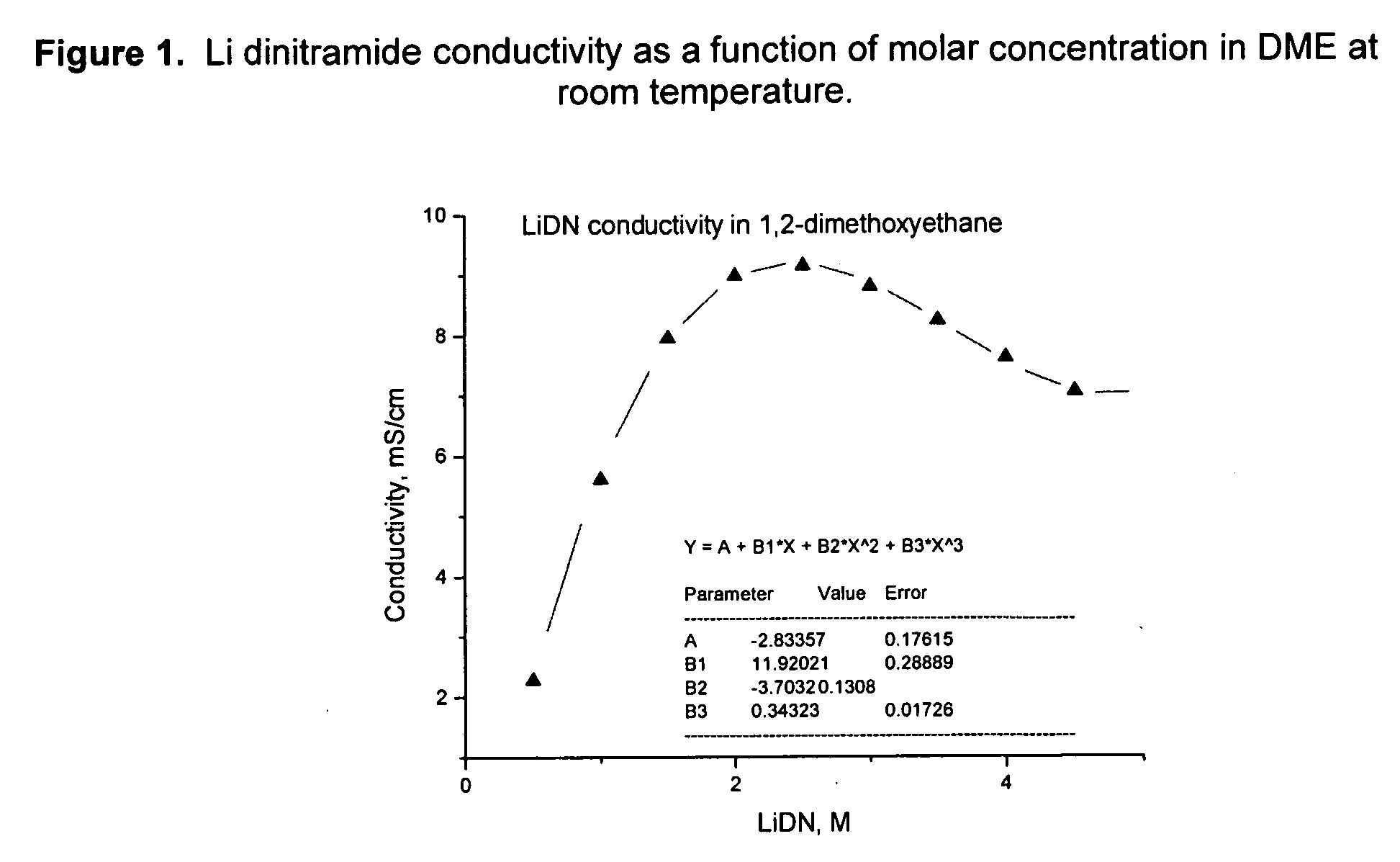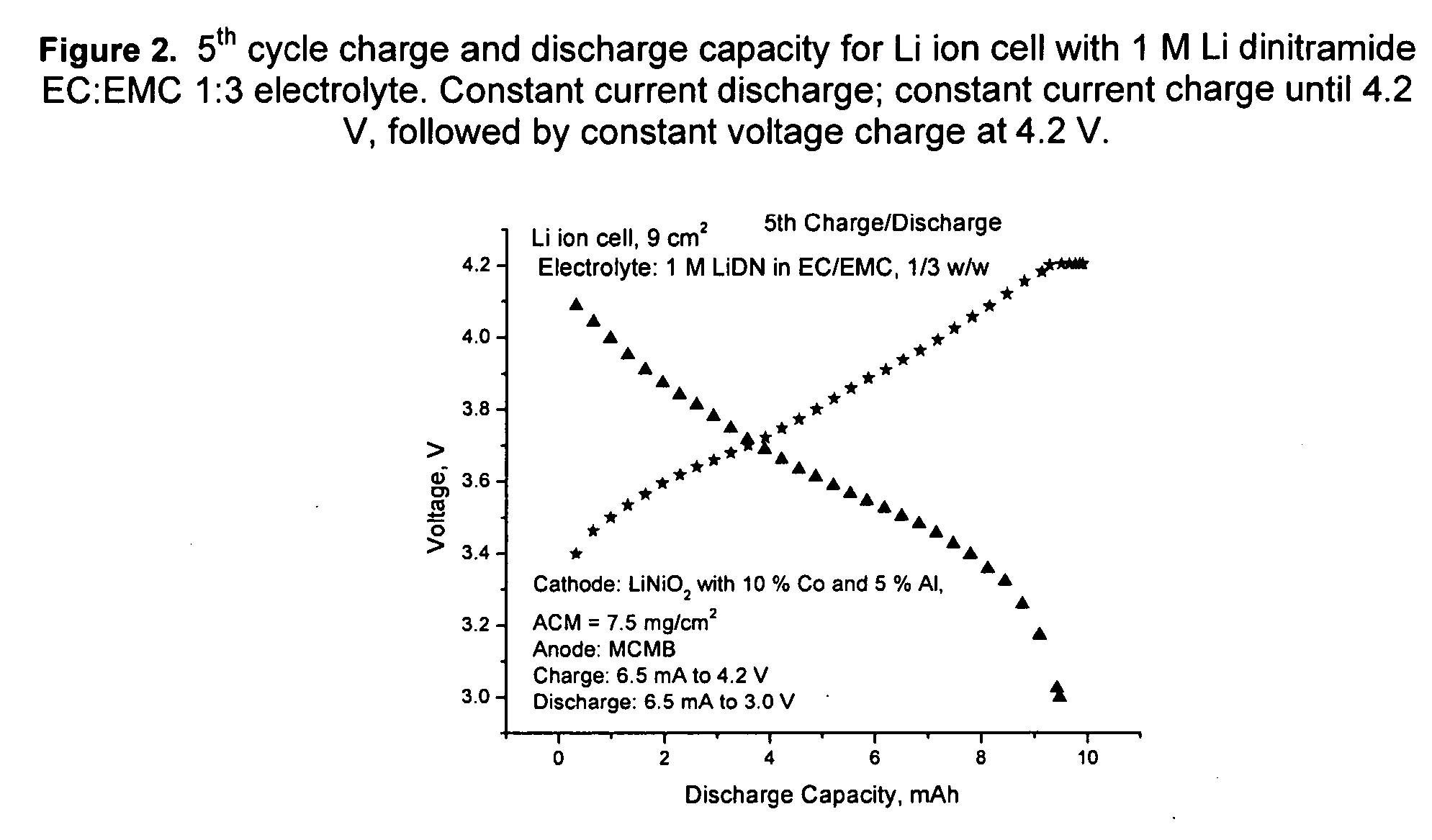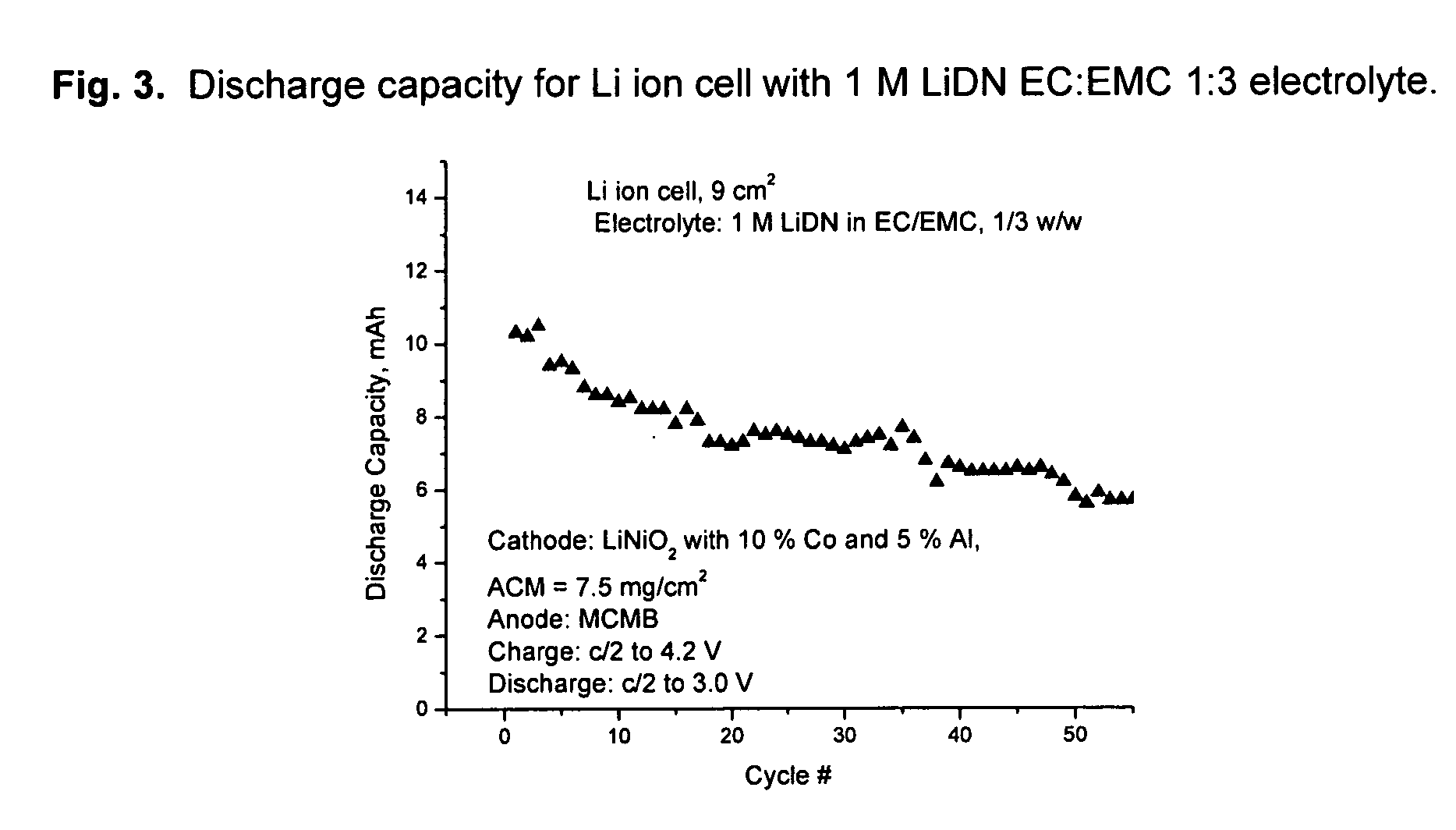Novel enhanced electrochemical cells with solid-electrolyte interphase promoters
a technology of solid-electrolyte promoters and electrochemical cells, which is applied in the field of electrochemical cells, can solve the problems of unavoidable surface film formation of alkali metal systems, permanent capacity loss, and difficult to achieve second requirements, so as to improve the flexibility of electrolyte solvent selection, improve the protection from reaction with other electrolyte components, and increase the charge capacity
- Summary
- Abstract
- Description
- Claims
- Application Information
AI Technical Summary
Benefits of technology
Problems solved by technology
Method used
Image
Examples
example i
Synthesis of Lithium Dinitramide
[0077]
[0078] 20.0 mL of oleum (30% SO3, density 1.902 g / mL) and 55.5 mL of fuming nitric acid (density 1.46 g / mL) were mixed in a flask equipped with high torque mechanical stirrer and cooled to minus 40° C. using dry ice / ethanol bath. Potassium sulfamate (21.0 g) was added in ˜1 g portions in 16 min while the reaction temperature fluctuated between minus 35° C. and 42° C. The reaction mixture was stirred for additional 35 min. at minus 38° C. to minus 40° C. To follow the reaction, samples of reaction mixture (0.1-0.15 g) were taken every 5 min., mixed with 100 mL of water, and absorbance of the sample at 285 nm was measured and normalized by sample weight. The maximum specific absorbance at 285 nm corresponded to the maximum yield of dinitramide salt. The reaction mixture was poured into 416 g of crushed ice and neutralized to pH 7.0 using a solution of 155 g of KOH in 310 g of water cooled to minus 10° C. The dilution and neutralization was perfor...
example ii
[0080] Li dinitramide was synthesized, mixed with electrolyte solvents, and the conductivity of the resulting electrolyte was measured. Conductivity of Li dinitramide as a function of molar concentration in DME at room temperature is presented in FIG. 1. Tables 2 and 3 show this salt is highly soluble in many solvents used in the Li battery industry with a conductivity maximum of ˜7 mS / cm. Table 1 shows LiDN conductivity in PC / DME, 1 / 1, mole / mole. Table 2 shows LiDN conductivity in several electrolyte solvents at room temperature.
example iii
[0081] Li dinitramide was synthesized as in Example I. It was found to passivate Li metal in aprotic solvents used in lithium batteries such as propylene carbonate, ethylmethylcarbonate, dimethylcarbonate, tetrahydrofuran, 1,3-dioxolane. It was not found to be an oxidizer to these solvents at RT to 60° C. Properties of Li dinitramide are summarized in Table 3.
TABLE 3Thermal stability and room temperature solubility.PropertySolventValueMelting pointNeat150 C.DecompositionNeat160-200 C.DecompositionPC, 5% solution>200 C.SolubilityOrganic2-3 M
[0082] Table 4 shows more detailed differential scanning calorimetery (DSC) results for thermal properties of Li dinitramide solutions. The neat Li dinitramide decomposition peak was relatively small (617 J / g) and was the same or reduced in the presence of electrolyte components (504-580 J / g) at 20% of Li dinitramide. In the diluted (2.5% of Li dinitramide) solutions the exothermal peak was dramatically reduced in tetraglyme (4G) or not detected...
PUM
| Property | Measurement | Unit |
|---|---|---|
| conductivity | aaaaa | aaaaa |
| melting point | aaaaa | aaaaa |
| density | aaaaa | aaaaa |
Abstract
Description
Claims
Application Information
 Login to View More
Login to View More - R&D
- Intellectual Property
- Life Sciences
- Materials
- Tech Scout
- Unparalleled Data Quality
- Higher Quality Content
- 60% Fewer Hallucinations
Browse by: Latest US Patents, China's latest patents, Technical Efficacy Thesaurus, Application Domain, Technology Topic, Popular Technical Reports.
© 2025 PatSnap. All rights reserved.Legal|Privacy policy|Modern Slavery Act Transparency Statement|Sitemap|About US| Contact US: help@patsnap.com



